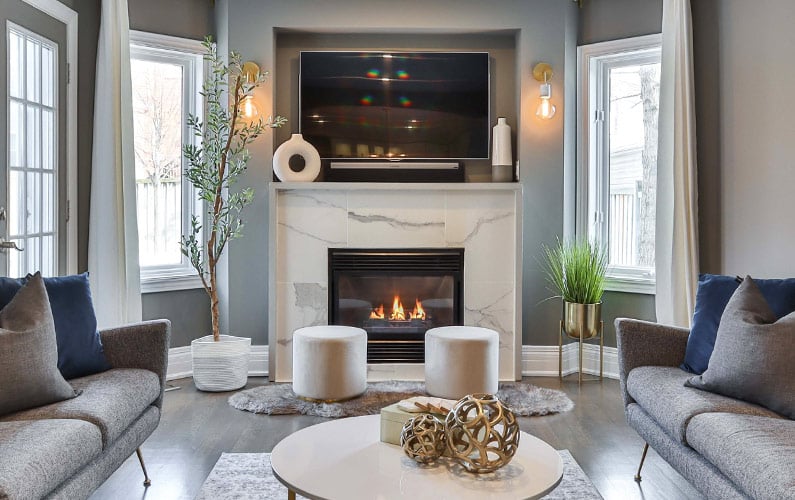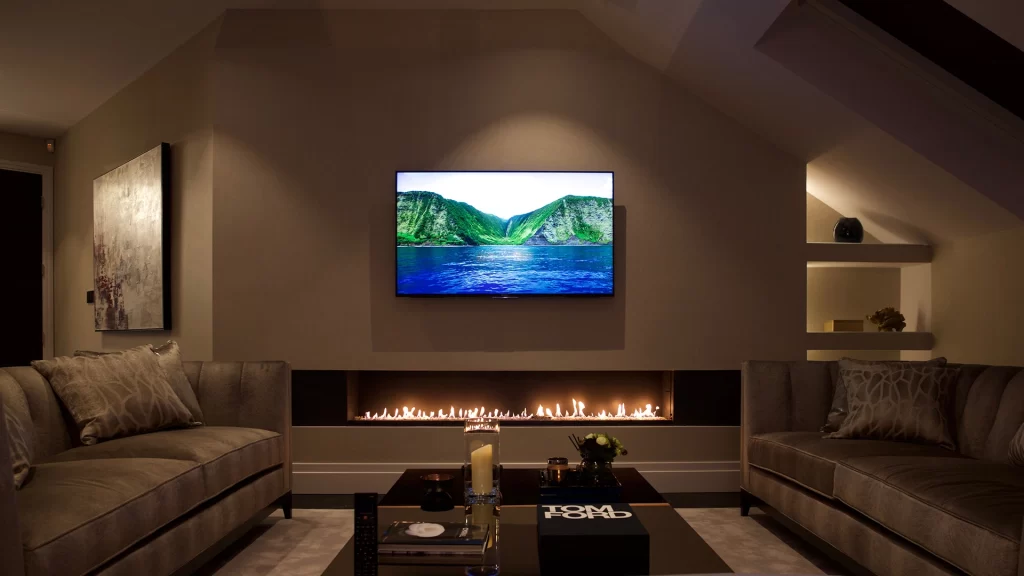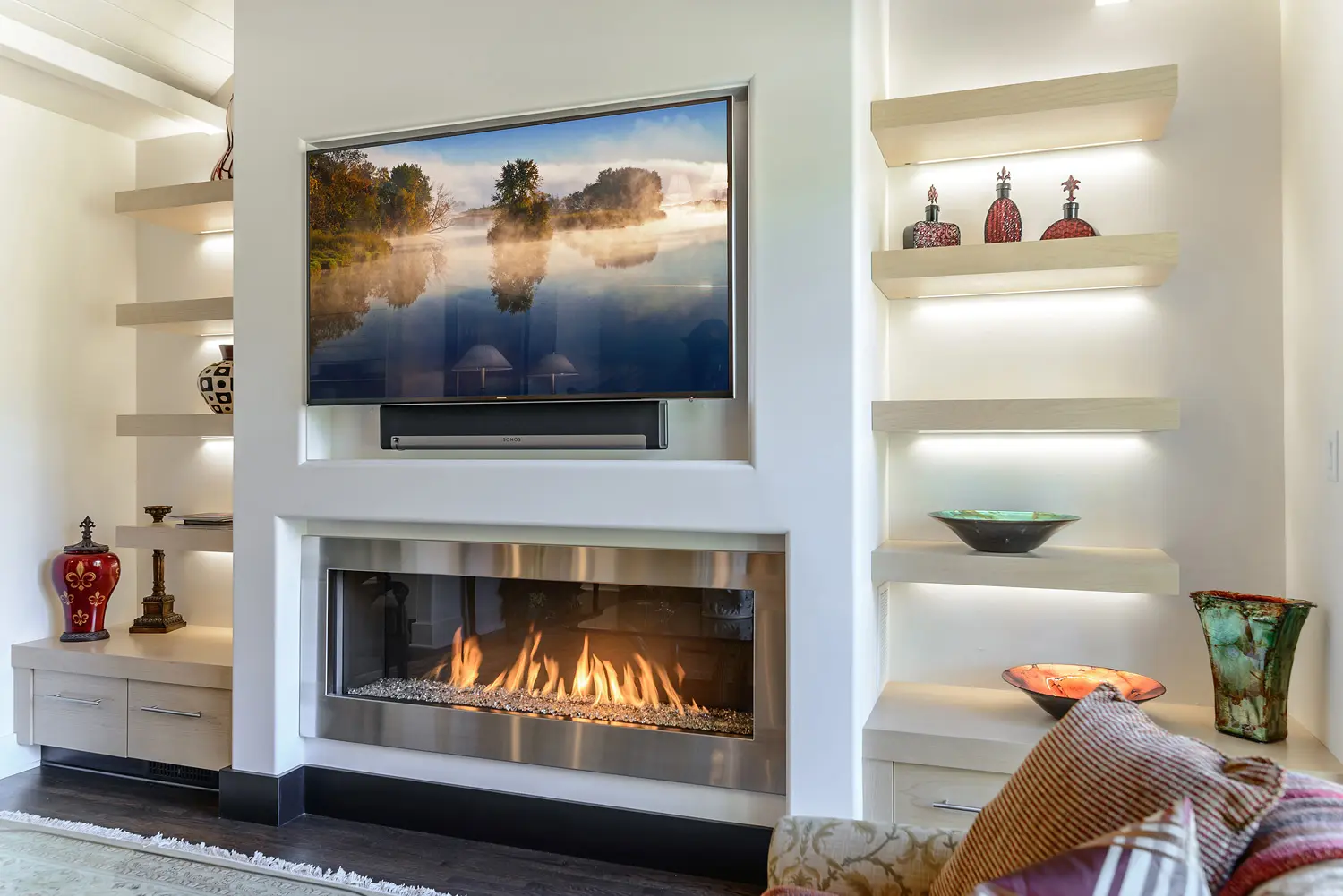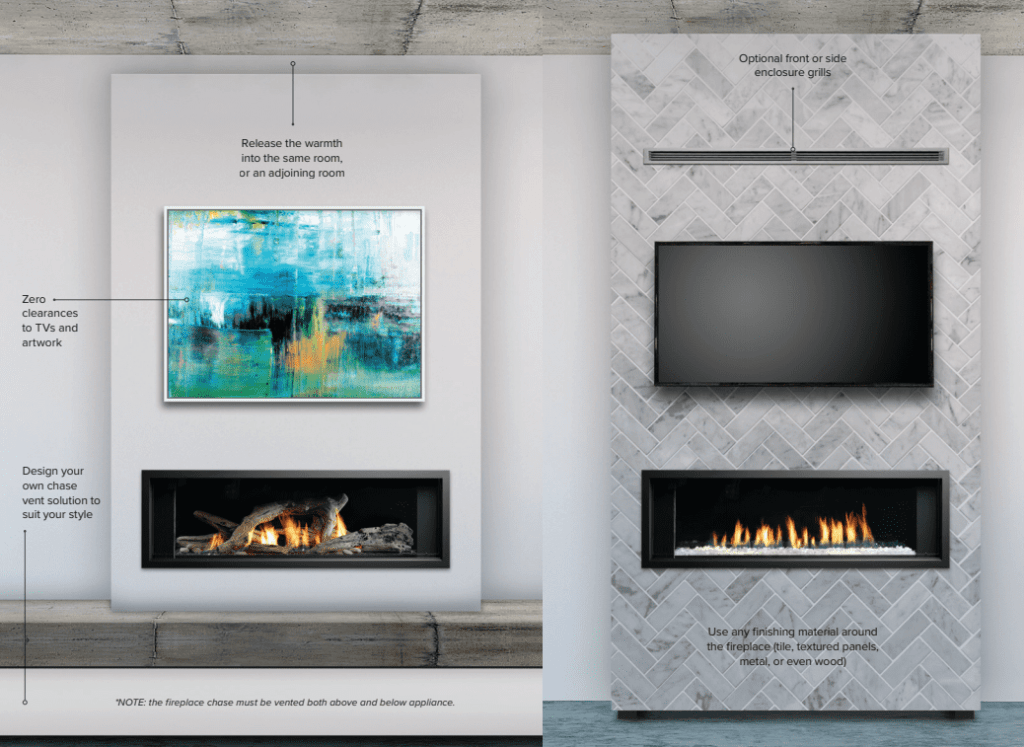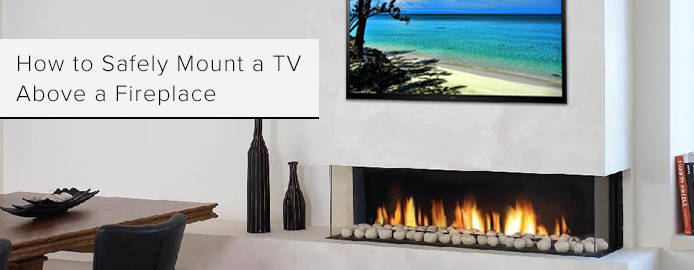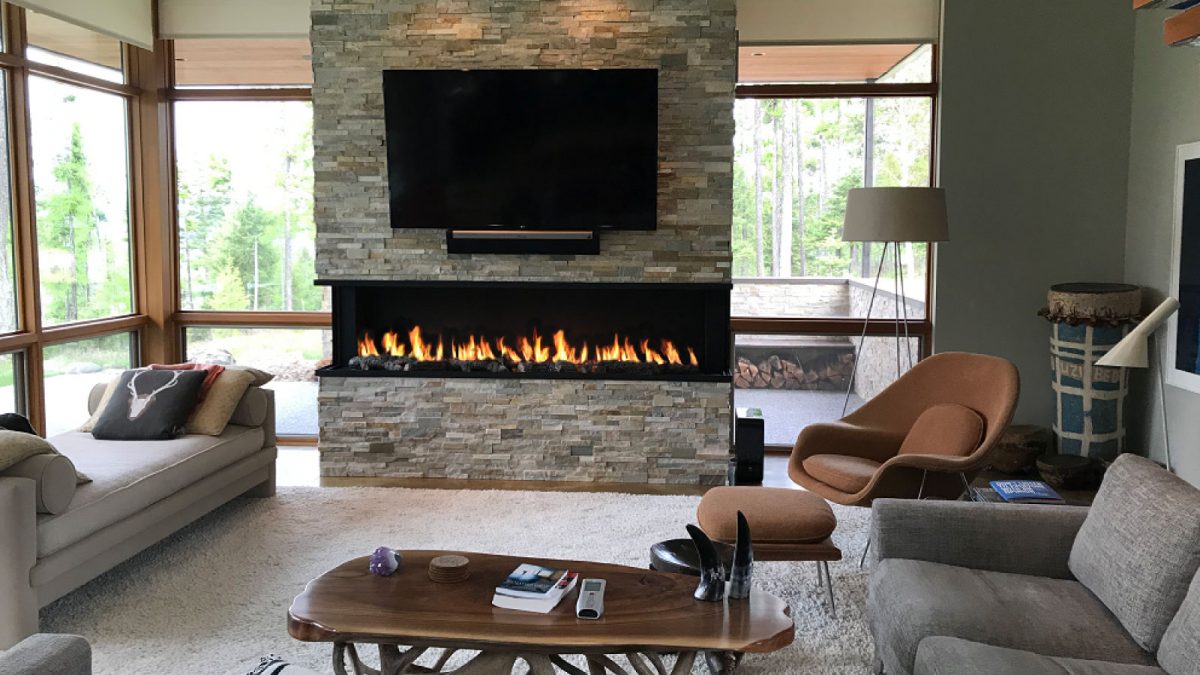Can You Mount Tv Over Gas Fireplace
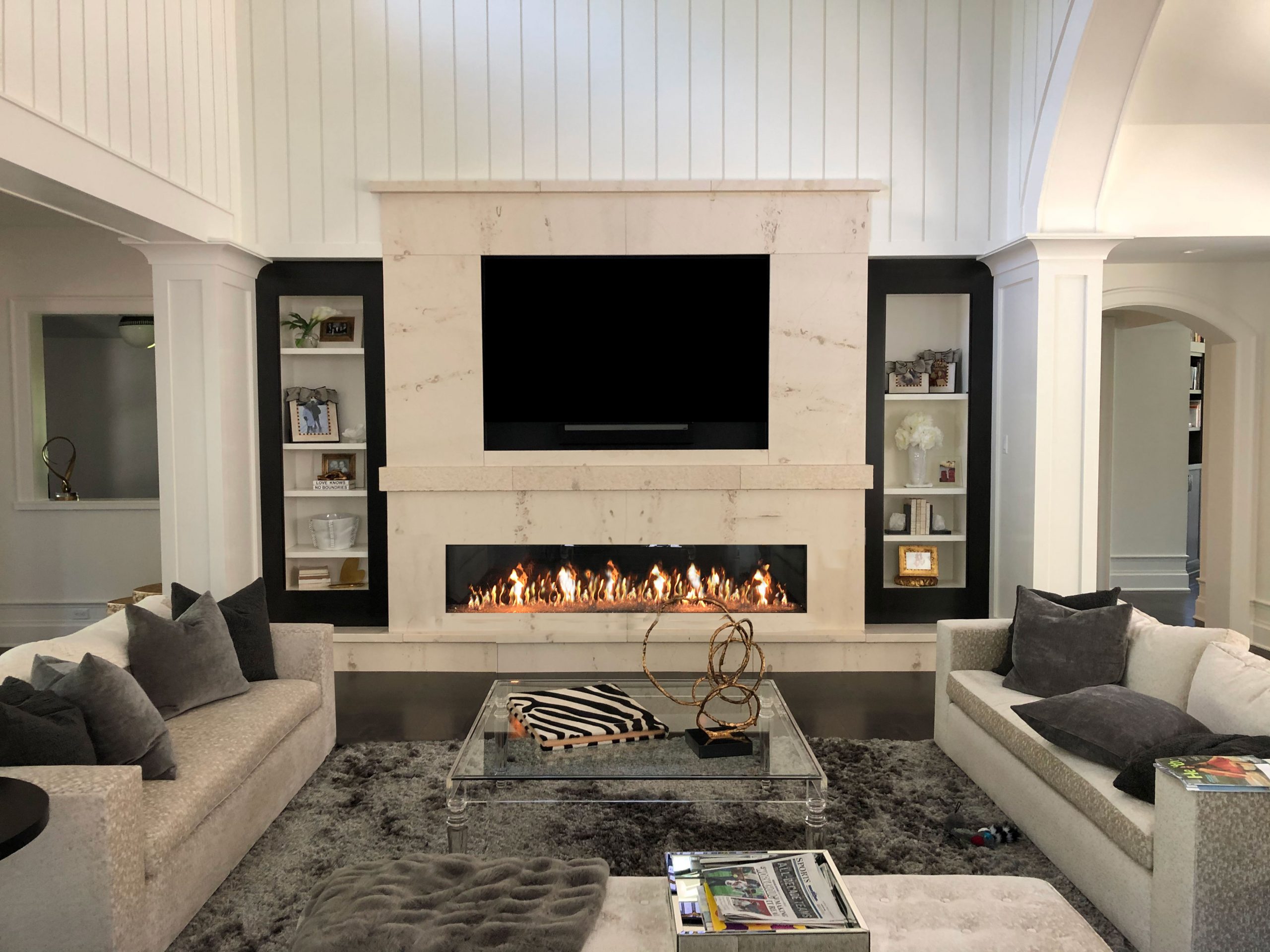
Mounting a TV above a gas fireplace is a popular design choice, but it's not always straightforward. It involves a delicate balance of aesthetics, safety, and technical considerations. This guide will provide you with the information you need to determine if it's a feasible option for your home.
Understanding the Challenges
The primary challenge lies in the heat produced by a gas fireplace. TVs are electronic devices sensitive to high temperatures. Excessive heat can damage the screen, internal components, and shorten the lifespan of your television. Let's explore these challenges in more detail.
Heat and Electronics: A Bad Combination
Imagine leaving your smartphone in direct sunlight on a hot day. The phone gets hot, and eventually, it might display a warning message or even shut down. A similar process occurs when a TV is subjected to the radiant heat from a fireplace. The excessive heat can cause components to malfunction, resulting in image distortion, screen discoloration, or complete failure. Preventing heat damage is the most crucial factor.
Safety Considerations
Beyond the TV itself, the mounting process needs to be approached with safety in mind. This includes the structural integrity of the wall, the type of mount used, and the proper routing of electrical wiring. Improper installation can create fire hazards or risk the TV falling. If you are uncertain, consult a qualified professional.
Warranty Implications
Many TV manufacturers explicitly state in their warranties that damage caused by excessive heat or improper installation is not covered. Mounting a TV above a fireplace might void your warranty. Check the warranty documentation carefully before proceeding. Read the fine print!
Assessing Your Fireplace Setup
The feasibility of mounting a TV above a gas fireplace depends heavily on the specific characteristics of your fireplace and the surrounding wall. Here's what to consider:
Fireplace Type
Direct-vent fireplaces are generally safer for mounting a TV above. These fireplaces draw combustion air from outside and vent exhaust directly outside, minimizing the amount of heat that radiates into the room. They are typically sealed units and do not release exhaust into the living space. They are safer than the alternative. B-vent fireplaces (also called natural vent) use room air for combustion and vent exhaust up a chimney. They generate more heat into the room and are generally not recommended for mounting a TV above. Ventless fireplaces, while convenient, release combustion byproducts into the room and generate significant heat. Mounting a TV above a ventless fireplace is generally not recommended.
Mantel Presence and Size
A mantel acts as a shield, deflecting heat away from the wall above the fireplace. The larger and more protruding the mantel, the better it will protect the TV. Consider the depth and height of your existing mantel. If your fireplace doesn't have a substantial mantel, you might need to add one. If you do add one, measure the heat after running the fire place and consider heat shielding material.
Distance Between Fireplace and TV
The distance between the top of the fireplace and the bottom of where the TV will be mounted is a critical factor. Greater distance means less heat exposure. Aim for at least 12 inches, and preferably more. If space is limited, it might not be feasible to mount a TV safely.
Wall Construction
The wall's construction is important for several reasons. Firstly, it needs to be strong enough to support the weight of the TV and the mount. Secondly, you need to know what's behind the wall – are there electrical wires, gas lines, or plumbing? Drilling into these could be disastrous. Stud finders are useful tools for locating studs, and stud walls are generally easier to mount to. If you have drywall, you can use drywall anchors. If you have a brick or concrete wall, you'll need to use specialized masonry drill bits and anchors. If you're unsure, consult a professional.
Heat Testing
Before committing to mounting your TV, perform a heat test. Turn on your fireplace at its highest setting and let it run for an extended period (at least an hour). Use a thermometer to measure the temperature on the wall where the TV will be mounted. If the temperature exceeds 90-100°F (32-38°C), it's likely too hot for a TV. Repeat this test several times under different weather conditions for a true average.
Mitigation Strategies
If, after assessing your setup, you're still determined to mount your TV above the fireplace, here are some strategies to mitigate the risks:
Install a Deeper Mantel
As mentioned earlier, a larger mantel can effectively deflect heat. Consider installing a deeper, wider mantel made of a heat-resistant material like stone or concrete.
Use a Heat Shield
A heat shield is a reflective barrier that can be installed behind the TV to deflect radiant heat. These shields are typically made of metal and can be purchased online or at home improvement stores. Think of it like a shiny sunshade for your car's windshield – it reflects the sunlight (or heat) away.
Choose a Full-Motion Mount
A full-motion mount allows you to tilt and swivel the TV. This can be helpful for adjusting the viewing angle and, more importantly, for pulling the TV away from the wall when the fireplace is in use. This increased air gap helps reduce heat exposure. Look for one with a long extension arm.
Consider a Recessed Niche
Creating a recessed niche in the wall above the fireplace can provide additional insulation and airflow. This involves building a frame around the TV, creating a gap between the TV and the wall. However, this is a more complex project that might require professional help.
Ventilation
Adequate ventilation is key. Ensure that there's ample space around the TV for air to circulate. Avoid blocking any vents on the TV. You can also install small fans behind the TV to help dissipate heat. Think of it like a miniature cooling system.
Lower the Fireplace Flame
If possible, consider using the fireplace at a lower flame setting when watching TV. This will reduce the amount of heat generated. Check your fireplace's manual for flame adjustment options.
Alternative Solutions
If, after considering all the factors, you decide that mounting a TV above the fireplace is too risky, here are some alternative solutions:
Mount the TV on an Adjacent Wall
This is often the simplest and safest solution. Mounting the TV on a nearby wall eliminates the heat problem altogether. You can still arrange your furniture to focus on both the fireplace and the TV. It may simply be a matter of rearranging the room.
Use a TV Stand
A TV stand provides a stable and safe platform for your TV. You can choose a stand that complements your fireplace and overall decor. This offers more flexibility in terms of placement.
Consider a Projector and Screen
A projector and screen offer a cinematic viewing experience and can be easily stored away when not in use. This eliminates the need for a permanent TV installation near the fireplace.
Professional Installation
Mounting a TV above a fireplace involves electrical wiring, structural considerations, and safety protocols. Unless you have experience with these tasks, it's best to hire a qualified professional. A professional installer can assess your specific situation, recommend the appropriate mounting hardware, and ensure that the installation is done safely and correctly. They can also advise you on heat mitigation strategies and warranty implications.
Final Considerations
Mounting a TV above a gas fireplace is a decision that requires careful consideration of several factors. Prioritize safety and always err on the side of caution. Evaluate your fireplace setup, assess the risks, and implement mitigation strategies if necessary. If in doubt, consult a professional. Remember that your safety and the longevity of your TV are paramount.
Ultimately, the decision of whether or not to mount a TV above a gas fireplace is a personal one. By carefully weighing the pros and cons, you can make an informed choice that's right for your home and your viewing needs. Don't hesitate to seek professional advice to ensure a safe and successful installation.
